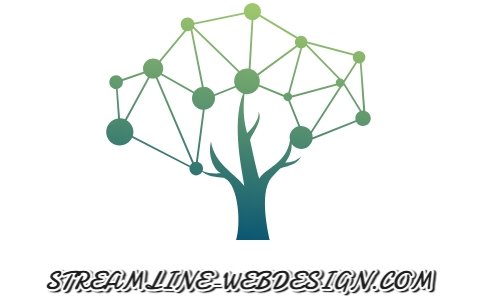
In modern web development, components play a central role in building scalable and maintainable applications. These components can be broadly categorized into two types: Web Components and framework components. While Web Components are touted for their flexibility and framework-agnosticism, framework components — which are specific to a particular JavaScript framework like React, Vue, or Angular — offer their own set of advantages and drawbacks. In this article, we will explore the strengths and limitations of framework components, providing a clearer understanding of where they shine and where they may fall short.
What Are Framework Components?
Framework components are the reusable pieces of code that are tightly integrated with a specific front-end framework, such as React, Vue, Angular, or even newer frameworks like Svelte and SolidJS. These components are designed to work seamlessly within the context of the framework’s architecture, using its specific tools, conventions, and APIs.
For example, React components are built using JSX syntax and state management mechanisms specific to React, while Angular components rely on dependency injection and TypeScript for their functionality. Vue, on the other hand, offers a more lightweight, flexible system that is beginner-friendly and uses its own set of directives and templating syntax.
The Strengths of Framework Components
- Established Ecosystem and Community Support
One of the key advantages of using framework components is the well-established ecosystem that accompanies popular frameworks like React, Vue, and Angular. These frameworks come with robust communities, providing developers with a wealth of resources, tutorials, plugins, and third-party tools. The strong community support helps developers troubleshoot issues faster and ensures that frameworks remain actively maintained and improved. - Developer-Friendly Integrations and Tools
Framework components are tightly coupled with the development environment they are built for. This means that developers get access to a suite of powerful development tools, such as live-reloading, error tracking, and debugging tools that are built specifically for the framework. React, for instance, has React DevTools for inspecting components, while Angular and Vue offer their own powerful CLI tools for streamlining development tasks. - Comprehensive Documentation and Resources
A significant advantage of framework components is the abundance of comprehensive documentation and learning materials available for frameworks like React and Vue. This extensive documentation, combined with numerous community contributions, makes it easy for developers — from beginners to advanced users — to get up to speed quickly. - Core Functionality and Built-in Features
Framework components come with built-in functionality that streamlines development. React, for instance, includes state management and a virtual DOM for efficient rendering. Vue’s reactive system and Angular’s two-way data binding are just a few examples of how these frameworks provide functionality out-of-the-box, reducing the need for third-party libraries. - Tested Code and Performance Optimizations
Framework components are rigorously tested as part of the framework itself, ensuring stability and reliability. Since these components are part of a mature ecosystem, developers can trust that they will work well under a variety of conditions. Additionally, frameworks often include performance optimizations that help ensure efficient updates and rendering. - Cross-Browser Support
One of the hallmarks of established frameworks is their commitment to ensuring that their components work across all modern browsers. With tested cross-browser compatibility and ongoing updates, developers can confidently use framework components without worrying about discrepancies across different platforms. - Fast Development Process
Framework components are specifically designed to streamline development, making it easier and faster to build and iterate on an application. Since they are part of a larger framework, developers don’t need to reinvent the wheel for common functionality, which accelerates the development process.
The Limitations of Framework Components
While framework components offer numerous advantages, they also come with certain limitations that developers need to be aware of:
- Limited Flexibility Outside the Framework
Framework components are built with specific frameworks in mind, meaning they often cannot be reused outside of their intended context. For instance, a React component relies heavily on the React ecosystem — its state management system, JSX syntax, and lifecycle methods — making it difficult, if not impossible, to use that same component in a non-React application. This limits the reusability of components and makes them less flexible compared to Web Components, which are designed to work across multiple frameworks. - Vendor Lock-In
A significant drawback of framework components is that they can create a form of vendor lock-in. As developers become more reliant on a specific framework’s components, it becomes increasingly difficult to migrate to another framework without significant rework. For example, if an application is built entirely using React components, switching to Vue or Angular would require a complete overhaul of the component architecture. This vendor lock-in can hinder long-term flexibility and scalability, especially for large projects or organizations looking to switch technologies in the future. - Tightly Coupled to Framework APIs
Framework components are built to leverage the unique features and conventions of their specific frameworks. While this makes them powerful within their ecosystem, it also means they are tightly coupled to the framework’s APIs and lifecycle. For example, React’s state management system, Angular’s dependency injection, and Vue’s reactivity system are all critical to how their respective components function. This deep integration can make it difficult to extract and reuse individual components outside of the framework’s ecosystem. - Lack of Cross-Framework Compatibility
Unlike Web Components, which are designed to be framework-agnostic, framework components are typically not compatible across different frameworks. This lack of interoperability can lead to fragmented codebases, as developers may need to rewrite or adjust components when switching frameworks. This can be particularly problematic for large projects that span multiple teams or involve a variety of technologies.
The Trade-Off: Flexibility vs. Efficiency
The decision to use framework components versus Web Components boils down to a trade-off between flexibility and efficiency. Framework components excel in environments where the goal is rapid development, strong community support, and seamless integration with a specific framework’s tools and conventions. They allow for faster development cycles, better performance optimizations, and richer, more cohesive user interfaces.
However, when long-term flexibility, reusability, and cross-framework compatibility are essential, Web Components offer a distinct advantage. They can be integrated into any project regardless of the underlying framework, making them a more versatile choice for larger, more diverse applications that need to evolve over time.
Conclusion
Framework components are powerful tools within their respective ecosystems, offering numerous advantages such as fast development, performance optimizations, and strong community support. However, their limitations — including lack of flexibility, vendor lock-in, and framework dependency — are important considerations when choosing the right approach for your project.
Ultimately, the choice between using framework components or Web Components depends on your project’s needs. If you’re building an application that will remain within a single framework for its entire lifecycle, framework components provide a streamlined and efficient solution. On the other hand, if long-term flexibility and cross-framework compatibility are more important, Web Components may be the better choice. Understanding the strengths and weaknesses of each can help you make a more informed decision for your development workflow.











